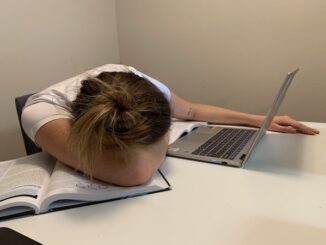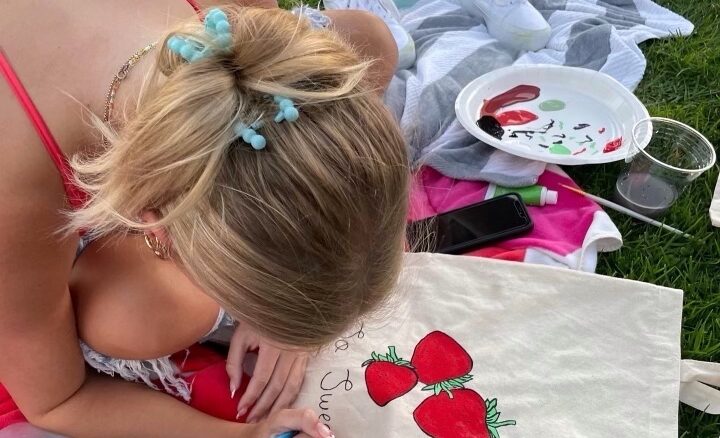
During the lockdown, art became a way for individuals to express themselves and release pent-up frustration.
For sophomore communication major Trinity Korn, painting became an act of self-care to help her decompress.
“Before art, I don’t know how I dealt with stress,” Korn said.
Pepperdine students utilize different art forms to help them de-stress during the intense school year. Students use painting, dance, music and crafts to release stress and anxiety and improve their mental health. Pepperdine’s Resilience Informed Skills Education (RISE) program even offers a special crafting event called “Crafternoon,” which was part of this semester’s RISE and Reflect event.
Four Pepperdine students and two art professors share how artistic expression helps them to unwind.
Art as therapy
Art is the creation of aesthetically appealing work. No matter the skill level, the creative process can help those struggling with stress release tension and engage in therapeutic practices to improve their overall well-being.
“Making art can significantly reduce stress-related hormones in your body,” Frank Otto wrote in a June 14 Drexel News article.
Psychologists even use art therapeutically to help clients learn how to express themselves and their emotions in new ways and reduce stress. Whether struggling with stress from school, depression, anxiety, etc., art therapy allows people to focus on creating art and get their minds off of what may be causing stress.
“Creating art helps many people slow down, allowing them to relax, de-stress, and tap into their creativity,” The Sage Neuroscience Center, an Integrated Behavioral Health facility, wrote.
For Korn, art has allowed her to release stress since the start of COVID-19. Being home during the lockdown allowed Korn to develop her creative side. Through this quarantine craft, she realized art relieves stress and frustration, helping her to improve her mental health during the pandemic and still to this day.
“It’s important to do things you love,” Korn said. “Art’s an act of self-care and helped me a lot emotionally.”
Eat, sleep, paint
Many may say creating art for a grade could create stress and loss of the ability for art to release tension, but junior art major Mia Earls disagrees.
Spending roughly 50 to 75 hours a week working in the art studio is what Earls is used to. And lives for.
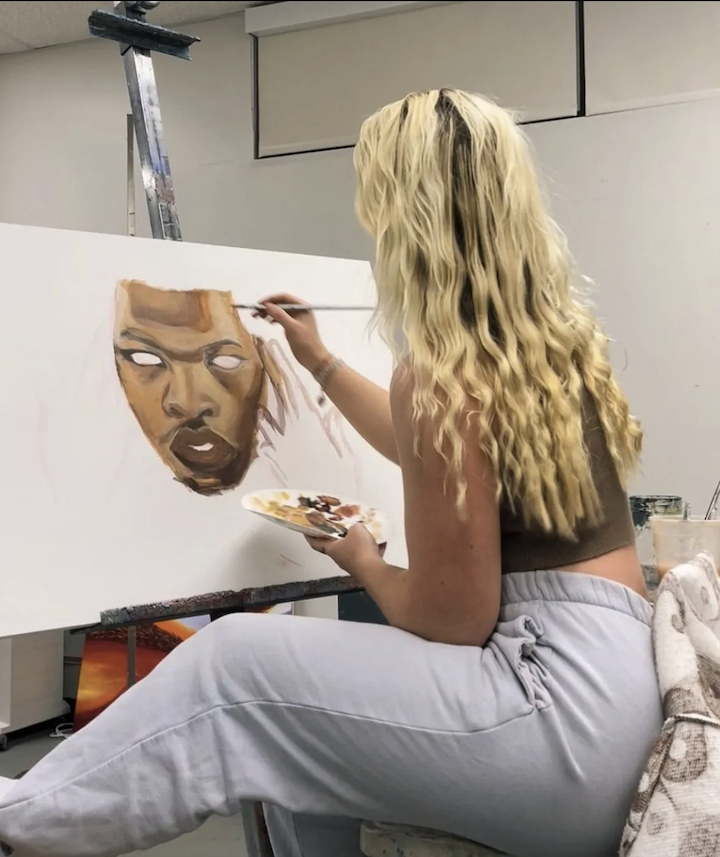
Art is “free therapy,” Earls said.
Earl said she has always relied on art since she was young to help her get through some of the most challenging times in her life. For her, art is a form of meditation and therapy, how she expresses her emotions and balances her life.
So while art improves her mental health, she is also learning and getting a degree in what she loves.
Though Earls can paint all day, not everyone can devote that time to art.
The good news is that just 45 minutes spent creating can lower stress levels, actively lowering cortisol levels, according to a study published on Sage Neuroscience Center.
The study also found that art can increase levels of dopamine. Dopamine is responsible for making people feel good and can also increase levels of attraction and happiness. While painting, an artist experiencing high dopamine levels can exhibit the same feeling as being attracted to or in love with someone.
“When someone talks about being in love with someone, it’s that same feeling when I’m painting,” Earls said.
Earls sees art as a way to practice meditation and the best way to relieve stress.
“I just truly feel bliss when I’m painting,” Earls said. “It’s the only time I feel confident in myself, and brings me to a place of peace.”
She said art has become very integral to who she is as a person.
Teaching art
Fine Arts Professor Gretchen Batcheller said art had been a stress reliever for herself and her students during the pandemic and online schooling, but being back in person has been a relief.
“I’ve had students tell me more and more this year that it’s such a relief coming to this class,” Batcheller said.
Being at Pepperdine for over 10 years, Batcheller said she leads by example when encouraging students to paint more to destress. Batcheller opens her class and office hours to allow students, whether art majors or not, to paint alongside her and unwind.
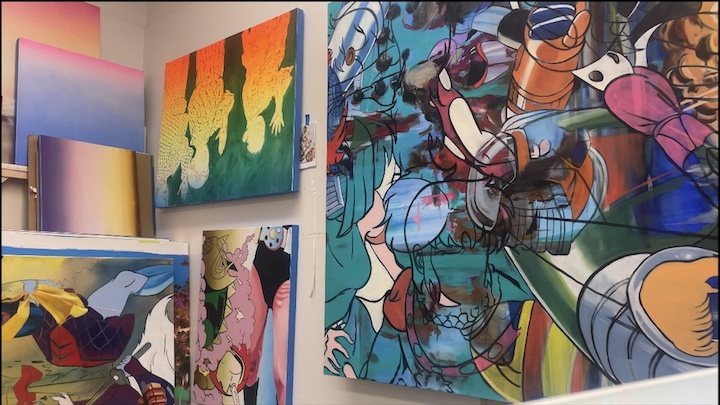
“One hundred percent, I think art lowers stress levels,” Batcheller said.
Reflecting on her life, Batcheller said art has helped her turn past experiences into visual lessons. Art allows those with common ground to connect with her and see similar struggles in a visual form.
Besides painting and studio art, sculpting and crafts are other ways students and professionals take time to destress.
Fine Arts Professor Ty Pownall specializes in sculpting. Leading the junior and senior studio and capstone classes, he introduces students to the physical side of art.
“With art, you get to share that with strangers,” Pownall said. “There’s something very fulfilling about that.”
Struggles and postponing crafting events
Recently, the Resilience Informed Skills Education program started a crafting group called “Crafternoons.” Available during RISE events, students can make crafts and take time to decompress after classes.
Additionally, Seaside residential advisors have offered painting events to their residents.
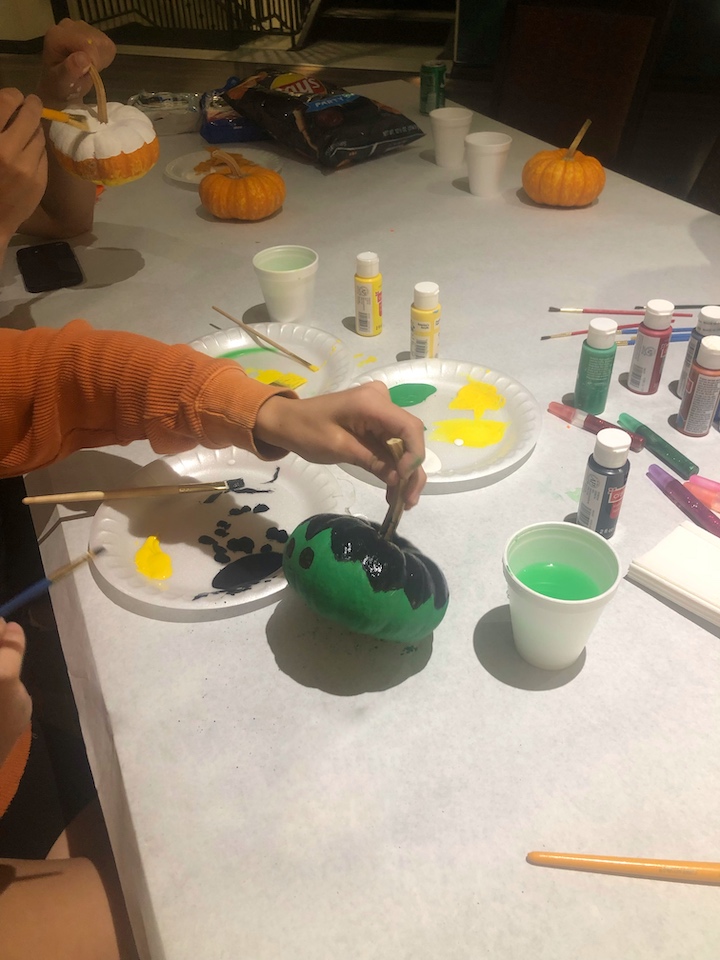
However, with the stress of midterms and deadlines, the RISE program and Seaside RAs have had quite a hard time mapping out the time to have these events for students.
“Sorry guys, we have to postpone pumpkin painting,” Resident Advisor Riley Lopez said in an announcement to Seaside residents.
Though hosting events like these can help lower stress, these programs have had difficulty convincing students to attend due to the stress and amount of work students have during the midterm season. Students are too overwhelmed and stressed about school to have time to engage in these activities, which might lower their stress.
While RISE initially offered Crafternoons every other Friday, due to low attendance, craft tables will now be a part of the RISE program’s bigger events. RISE officials hope that including crafting into a more versatile event will draw a bigger attendance in the future, said Jeffery Bowen, director for Library Programming and Public Affairs.
Dance and music
Creating physical art isn’t the only way for students to destress during the school year. Those who prefer dancing and playing musical instruments can also enjoy the same benefits of decreased stress.
With dancing and music, art isn’t created through a canvas but through physical movement. Moving the body and playing instruments helps to release tension just as much as painting does and is another way for students to de-stress.
“Dance is an outlet for emotional expression, stress reduction, and creativity that benefits youth during stressful situations by channeling their energy positively and helping them bond with peers,” Lauren Healey wrote in a Standard Lifestyle article.
Simone Chaddha, a sophomore integrated marketing communication major, said she relieves stress through dance. As a second-year Dance in Flight member, Chaddha finds that dance has been her way of expression since she was 7.
“If I didn’t have this art form, I would drown in my schoolwork,” Chaddha said. “I wouldn’t know how to look forward to something and release my stress.”
Chaddha followed her older sister into dance, but she said she never expected to have the dance community become her second home. Dancing has helped Chaddha with time management and given her something to look forward to during the school year.
“It’s the light at the end of the tunnel,” Chaddha said.
Junior business major Alex Consentino has immersed himself in the musical arts since he was little. His parents were keen to expose him to all types of music. Music has always been a part of his life, starting with piano at age 5 and moving to guitar at 12.
Whether playing or listening to music, Consentino said he views music as the most basic form of human expression that helps him connect with his artistic side.
“It’s therapeutic for me because I’m expressing my emotions and myself that I’m not normally able to,” Consentino said.
Devoting an hour a day to playing music has become habitual for Consentino and has immensely helped him de-stress during the school year.
“It got me to where I am now and will help me continue to grow,” Consentino said. “I’ll use it as a tool to keep moving forward in life.
Georgia Puckett reported this enterprise story in Jour 241 during the Fall 2022 semester under the supervision of Dr. Christina Littlefield and Dr. Theresa de los Santos. Dr. Littlefield supervised the web article.


